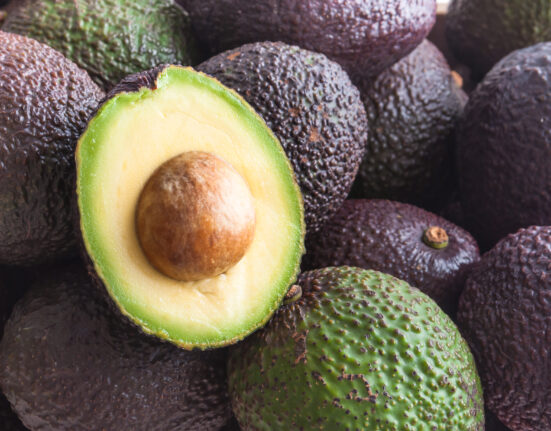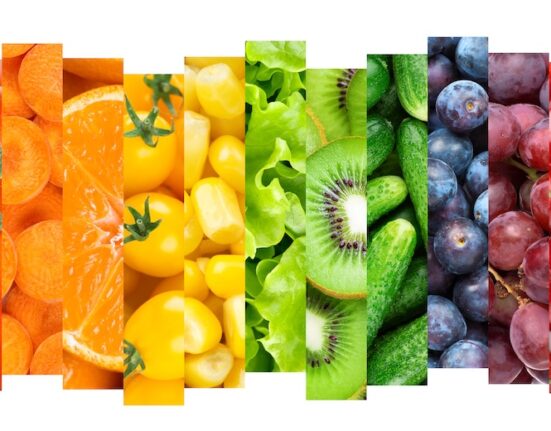In the shadow of volcanoes, in the quaint plaza of Antigua, Guatemala, a plaque stands as a testament to historical ties forged long ago. Presented by the California Avocado Society in 1946, this token commemorates the city’s pivotal contribution to the now-well-established California avocado industry—rooted in the seminal seedlings transported from Guatemala’s fertile soils.
This historical tie between Guatemala and the avocado industry in California underscores the foundational role Guatemala has played in global agriculture, particularly in the cultivation and export of avocados. Nowadays, buoyed by vigorous trade policies, technological strides, and strategic alliances, Guatemala’s agricultural sector is expanding its global footprint, enhancing its export prowess particularly in North America and beyond.

Renowned for exporting staples like sugarcane and coffee, along with fruits such as bananas, melons, and pineapples, and vegetables including snow peas, Guatemala is now broadening its agricultural palette. The country is increasing its output of avocados, berries, and citrus fruits, among others. Situated a mere stone’s throw from the U.S., Guatemalan producers are poised to meet surging North American demand, positioning themselves as key players in the global supply chain for decades to come.
Growth in Exports
From 2014 to 2023, the value of Guatemala’s fruit and nut exports rose by 60% from $1 billion to $1.6 billion, according to International Trade Center data. Bananas have typically represented close to 90% of the total. For vegetables, the value of exports has grown by a similar amount, rising by 62% from $252 million to $409 million. Around three-quarters of this goes to the United States, where Guatemala enjoys tariff-free trade thanks to the U.S.-Central America-Dominican Republic Free Trade Agreement (CAFTA-DR), which was ratified in 2005.
Guatemala also has FTAs with the European Union—where many of its other top fruit export markets exist—although it doesn’t currently have any with the United Kingdom or Canada, its No. 2 and 15 markets for fruits, respectively.
More than four-fifths of fruit exports have typically been shipped to the U.S. market. In 2023, Guatemala was the fourth largest supplier of fruits to the U.S. by value, behind only Mexico, Peru and Chile, USDA data shows. Its exports of around $1.5 billion gave it a 6% share of the $27 billion fruit import market. As a vegetable supplier to the U.S.—it holds the No. 7 position, with its shipments of $339 million in 2023 giving it a 2% share of the United States’ vegetable import market, which is dominated by Mexico and Canada.
In total, the country’s agricultural exports in 2023 reached US$4.4 billion, according to figures from the Guatemalan Ministry of Agriculture provided at the Agritrade trade fair that took place in Antigua in mid-March. The target for Guatemala is to roughly double that figure to more than US$8 billion by 2030, said Luis Teo, president of the Agritrade organizing committee and commercial manager of exporter Frutesa, an avocado and vegetable exporter.
“That is an effort that we at the Guatemalan Exporters’ Association (Agexport) are doing under the ‘Agroimpact’ initiative,” he said during the event. “What we are trying to do is double the country’s exports through various means, but the main thing is to do more of what we already do well and to do new things with new products.”
The number of attendees this year at Agritrade was 3,500, many of whom are current and potential buyers of Guatemalan produce items. Teo notes the numbers have been rising every year, reflecting the growing interest from importers and retail procurement directors in the country’s export offerings.
Advantages and Opportunities
While trade liberalization and close proximity to the U.S. market—it takes just three days to reach Miami via ocean freight—have undoubtedly been instrumental in facilitating agricultural trade growth, many other factors also help to explain Guatemala’s rising export prowess.
One of these is crop diversification. This has been enabled in large part thanks to the country’s numerous microclimates and varied elevations for agricultural production. While bananas remain by far the most important fruit export, the country has been increasingly focused on high-value crops that are seeing rising demand in global markets.
“Guatemalan producers have expanded their range of agricultural products to meet international demand, taking advantage of favorable climatic conditions and the diversity of microclimates in the country,” says Fernando Zuloaga, the agricultural manager of the Agexport trade organization.
“Agexport’s perspective on the future growth potential of Guatemala in its high-value fruit exports, such as avocados, berries, limes and mangoes, along with the main vegetables to the North American market is very encouraging. These products have great potential due to the continuous growth of demand.”
Another factor that has underpinned the expansion of Guatemala’s agricultural capabilities is investments in technology. Modernizing agricultural practices through the integration of advanced irrigation systems, pest control and crop monitoring technologies has dramatically increased both produce yield and quality. This technological leap not only optimizes the use of natural resources, but it also aligns with global standards, enhancing Guatemala’s competitive edge on the international stage.
Further driving the growth of Guatemala’s agricultural exports is the focus on human capital development. The government, along with various non-governmental organizations, has implemented numerous educational and training programs aimed at helping growers. These initiatives focus on sustainable farming practices, quality control and compliance with international export standards, ensuring that the workforce is well-equipped to meet the demands of a global market.
Hass Avocado Potential
Perhaps the most notable of Guatemala’s non-traditional fruit crops is Hass avocados, production of which has grown significantly in recent years, with the country exporting around 11,000 tons (2.4 million pounds) of the fruit to Europe and Central America in the 2023-24 season. Exports are expected to soar in the future. By some estimates, the current figure of approximately 6,000 hectares (14,830 acres) of Hass avocado orchards in the country has the potential to rise several-fold.
While most exports have so far gone to European countries, Guatemala recently moved one big step closer to achieving long-awaited access to the U.S. market. The USDA’s Animal and Plant Health Inspection Service (APHIS) announced on March 27 that Guatemalan Hass avocados had met its risk-assessment standards and could advance to a public comment period regarding the fruits’ market access. Admissibility to the U.S. market would be a major boost for the industry, opening up a lucrative and growing market on its doorstep.
In addition, it would be a boost for American importers who would be afforded an additional and much-needed supplier to help provide stability to the often-volatile market. Guatemala’s main crop season typically runs from November to March, a key window before the start of Peru’s season—the U.S. market’s second biggest foreign supplier, after Mexico—while the smaller ‘Loca Crop’ typically lasts from June to July.
Gloria Elena Polanco, the general manager at Frutesa and the mother of Luis Teo—and a key figure in the industry who pioneered fresh produce exports from Guatemala several decades ago—expects that the first few years in the U.S. market will be gradual, and very limited compared to more established suppliers.

“My company has been exporting to the UK for five years now. We’ve slowly been growing, but what Peru exports in one day, sometimes on one boat, is more than what we have here the whole season,” says Polanco. But she is optimistic Guatemala will be able to carve out a niche for itself in the vast U.S. avocado market, noting that growers who have traditionally built their big businesses in bananas are now diversifying into avocados.
Guatemala’s many advantages for Hass avocado production—including large amounts of annual rainfall—have also drawn the interest of the world’s biggest avocado companies. Mission Produce, headquartered in Oxnard, CA, has been exporting avocados from Guatemala for several years but made its first investment in production in 2020, when it established farming operations with the long-term lease of an avocado farm called Cerro Redondo.
Since then, it has progressively planted avocados on the land, and as of November 2023, it had developed 1,800 acres of avocados. The Central American country is now one of the four countries where it is vertically integrated, the others being Peru, Colombia and South Africa.
“Our decision to invest in Guatemala was based on the timing of the harvest location, the availability of supply and its natural resources,” says Steve Barnard, Mission Produce’s CEO. “Guatemala is spread out, since they have two flowers, so we have more options on the harvest. That gives us the time to place the fruit in the right market.”
In Guatemala, Mission Produce is supporting local growers in gaining certifications, which is in turn building stronger grower relationships and positioning them for a strong entrance to the U.S. The company plans for Guatemala to be a complementary origin mostly during the winter months, but also in summer.
The company also plans to supply the U.S. market with Guatemalan avocados once APHIS gives the green light. “We see great potential for Guatemala as the region has several natural resources that promote the healthy production of avocados, including good soil, water and climate. Once approved, we expect the Guatemalan market to expand rapidly. We are already seeing substantial plantings in the region,” notes Barnard.
Other Fruits
Berries are another category whose future looks bright in Guatemala. The country is the second-largest exporter of fresh blackberries to the U.S., supplying around 2% of the market. The country benefits from having its peak export window between August and September, when the Mexico deal is completed, and Peru is still not in full swing. “If we increase our volumes in this period, we can take advantage of that high price window, which is not available all year,” says Francisco Solórzano, business director of Kultiva Organics.
Unlike blackberries, which are all exported to the U.S. via air freight to Miami and can enter the market without onerous restrictions, the situation is currently more complex for blueberry exporters. Due to strict pest control regulations, blueberries are subject to methyl bromide fumigation on entry to the U.S. market, which increases costs—making them less competitive—and also impacts the quality of the fruit.
Solórzano is optimistic that Guatemala will be granted improved access soon, given the number of growers investing in new blueberry cultivars in the country and the work being undertaken in Guatemala to improve pest control. “I expect that in a short time, Guatemala will be an important player in blueberry production,” he says.
“I think all berry production will increase in Guatemala, starting with blackberries and blueberries. Even the scarcity of strawberries means that we are all trying to produce more—so hopefully we can reach that point in production where it’s more convenient to export the fruit than to sell in the local market.”
In addition to berries, production and exports of other high-value fruits like mangoes and limes are also increasing. Volumes of both products remain low compared to many other countries, but both have access to the U.S. market and are increasing gradually. Zuloaga from Agexport adds that there is also strong potential for export growth of other fruits like papaya, pineapple, melon and rambutan, in addition to the continued growth of banana exports.
Bumps Ahead
Despite the high hopes for produce exports to global markets in the future, some areas of the industry face serious challenges, such as the snow pea sector—a vegetable powerhouse in Guatemala. According to Alejandra Tumax, executive director of the Guatemalan Snow Pea Association, that industry has been rigorously focusing on “production yields, quality standards, shelf life and minimum residue levels (MRLs), as well as the broader issues of climate volatility and environmental sustainability.”
Unfortunately, despite these concerted efforts, the sector is grappling with a decline in exports—a situation exacerbated by increasing costs and logistical constraints. “Every year our exports have gone down, hit by high costs, particularly freight and production, lower production yields due to climate volatility and increasingly stringent MRL restrictions that often seem nonsensical,” notes Tumax.

The situation is further complicated by the dynamics between the snow pea producers and their clients. The association points out that while clients have adjusted to their increased operational costs, they have done so at the expense of the producers. “When they lower sales prices to consumers, it is the producers who suffer as they are paid less for their products without any regard to their increased production costs,” says Tumax.
To address these challenges, the association has outlined a series of priorities: lowering production costs, increasing yields, reducing high shipping and air freight costs, enhancing access to irrigation systems and securing better seed materials. Specifically, the association highlights the logistical challenges of exporting to Europe, citing “the limited shipping lines available from Guatemala to Europe and the long transit times, at least 25-30 days, compounded by delays and ever-increasing MRL limitations, which have all taken their toll on the volume we ship.”
Moreover, the snow pea industry is facing a generational challenge, which has also been echoed by representatives of other fruit and vegetable categories. “We have noticed the younger generation is not interested in becoming farmers,” says Tumax. This disinterest among the youth threatens the long-term sustainability of farming practices in Guatemala, potentially leading to a significant loss of agricultural knowledge and skills.
An additional challenge for the country’s produce industry is its infrastructure and limited logistical offerings available to the country’s exporters. Improving both of these would ensure a more efficient and competitive supply chain.
“This includes the need for a greater offering of multimodal logistics services that improve rates to competitive levels for the agricultural industry,” says Zuloaga, adding there is also a need to build roads, irrigation systems, collection centers and cold chains that are fundamental to ensuring the quality and freshness of the products during their transportation and storage.
The limited shipping services also hinder Guatemala’s ability to penetrate other markets in North America. According to Gloria Elena Polanco, there are no direct shipping routes to Canada, with Canadian buyers generally purchasing Guatemalan produce through U.S. brokers. She adds the sea freight costs for certain routes can be extremely expensive considering the relatively short distance. “Believe it or not, it’s often cheaper to go to Rotterdam than it is to go to Miami.”
Something else that would aid the growth of Guatemala’s export industry, according to Zuloaga, is the expansion of support from institutions, as well as financing and agricultural insurance instruments. “This may include the development of specific credit and insurance programs for the agricultural sector, as well as promoting private investment in agricultural infrastructure and technology,” he says.
A Thriving Future
Despite these many challenges, it is hard to envision a future in which Guatemala doesn’t continue to rapidly expand and diversify its horticultural exports to world markets. North America, which already stands as its key destination, looks set to receive much of this volume. The eventual approval of U.S. market access for Hass avocados would be a game-changer for the industry.
Guatemala is brimming with potential. If it is able to address the potential hurdles that lie in its way, it is likely that the country that played a central role in the development of the avocado industry nearly a century ago will thrive in the decades to come.





